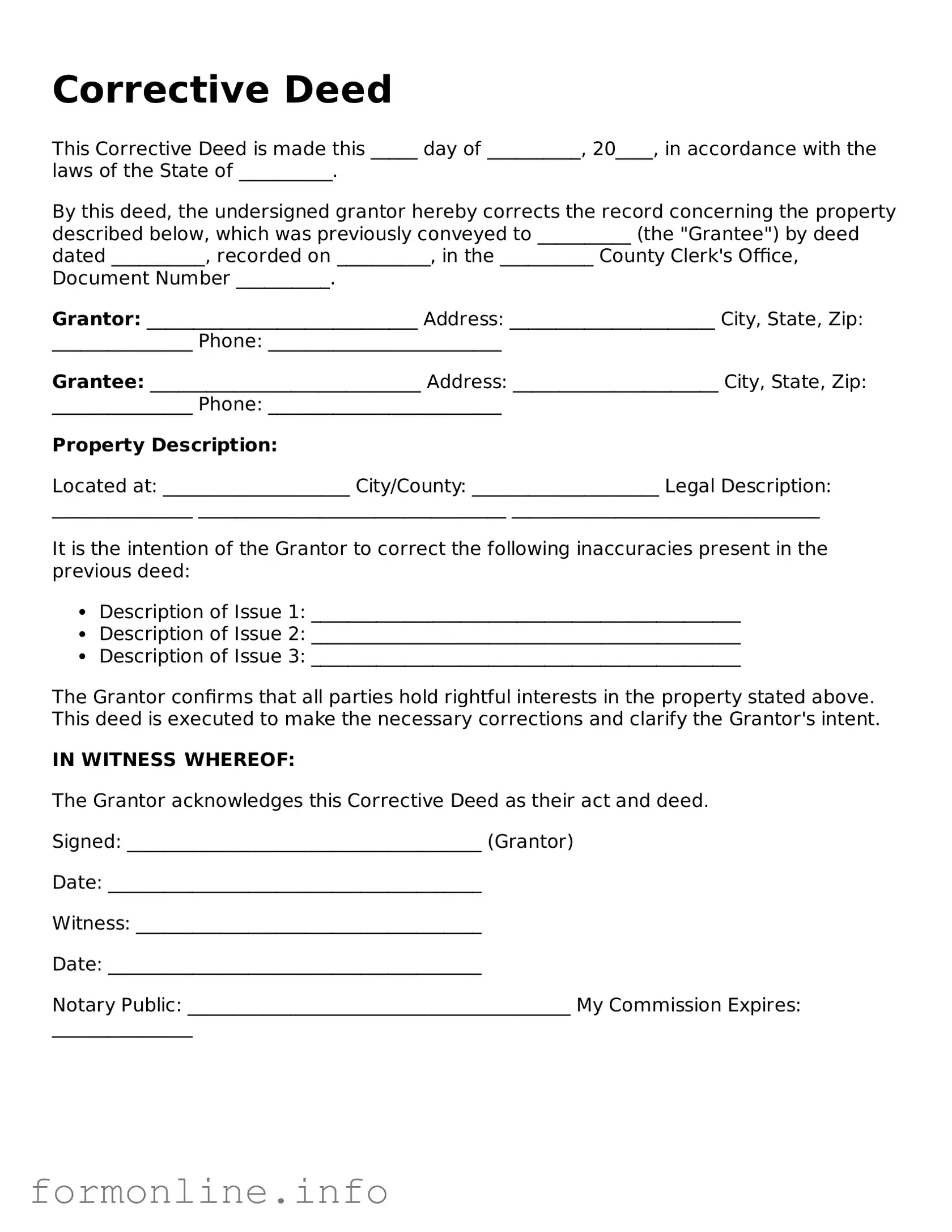Corrective Deed
This Corrective Deed is made this _____ day of __________, 20____, in accordance with the laws of the State of __________.
By this deed, the undersigned grantor hereby corrects the record concerning the property described below, which was previously conveyed to __________ (the "Grantee") by deed dated __________, recorded on __________, in the __________ County Clerk's Office, Document Number __________.
Grantor:
_____________________________
Address: ______________________
City, State, Zip: _______________
Phone: _________________________
Grantee:
_____________________________
Address: ______________________
City, State, Zip: _______________
Phone: _________________________
Property Description:
Located at: ____________________
City/County: ____________________
Legal Description: _______________
_________________________________
_________________________________
It is the intention of the Grantor to correct the following inaccuracies present in the previous deed:
-
Description of Issue 1: ______________________________________________
-
Description of Issue 2: ______________________________________________
-
Description of Issue 3: ______________________________________________
The Grantor confirms that all parties hold rightful interests in the property stated above. This deed is executed to make the necessary corrections and clarify the Grantor's intent.
IN WITNESS WHEREOF:
The Grantor acknowledges this Corrective Deed as their act and deed.
Signed: ______________________________________ (Grantor)
Date: ________________________________________
Witness: _____________________________________
Date: ________________________________________
Notary Public:
_________________________________________
My Commission Expires: _______________
